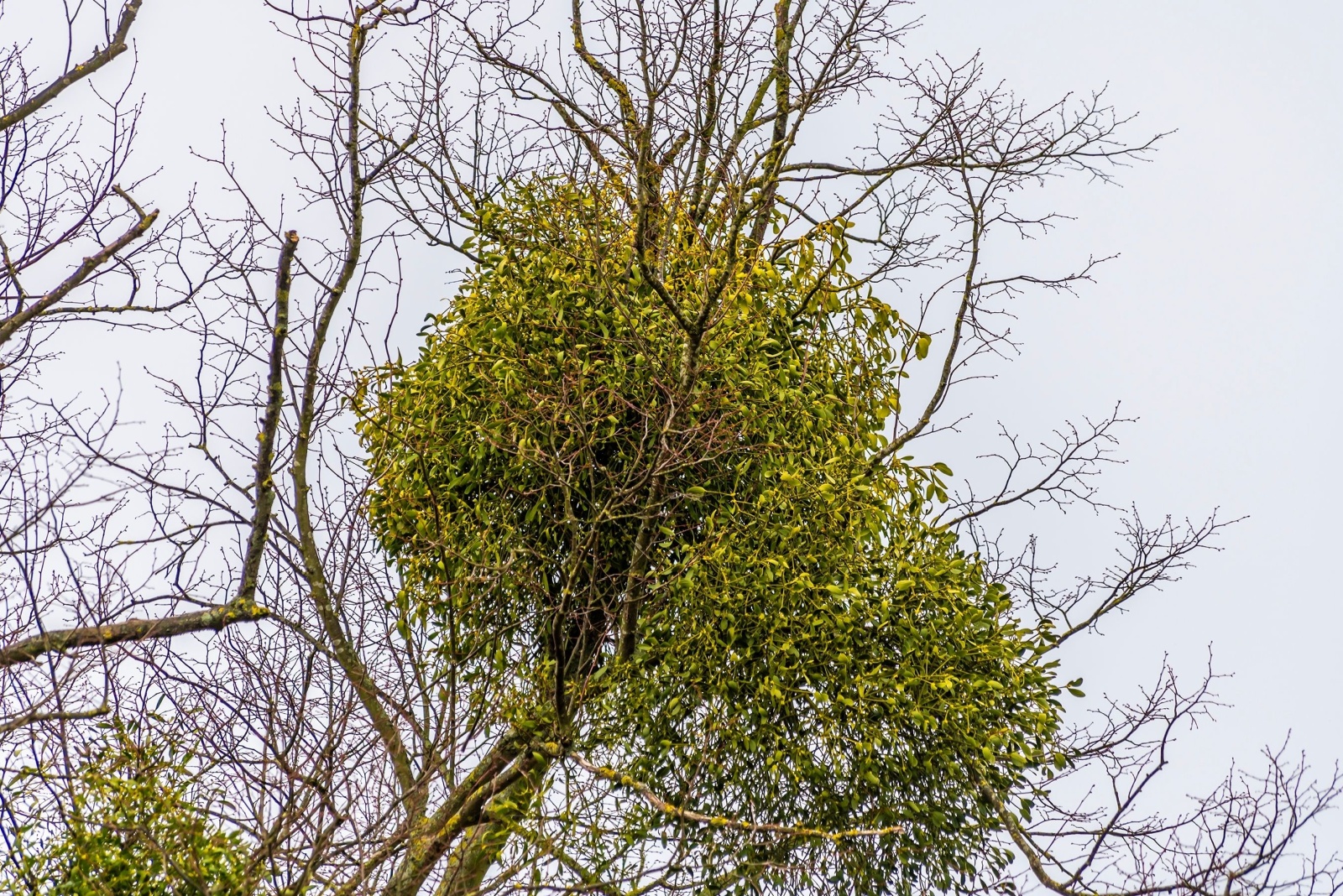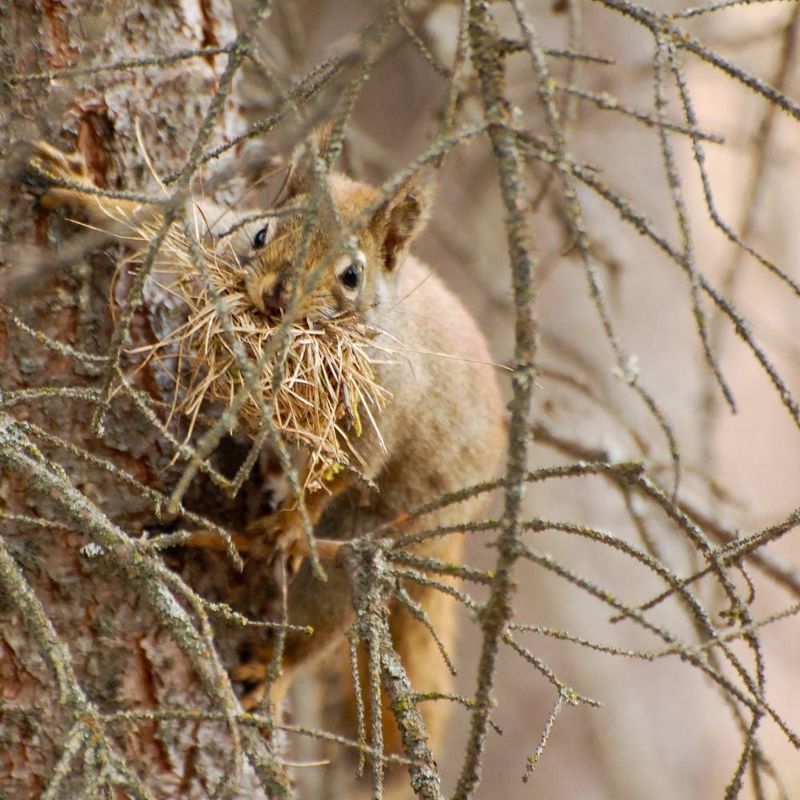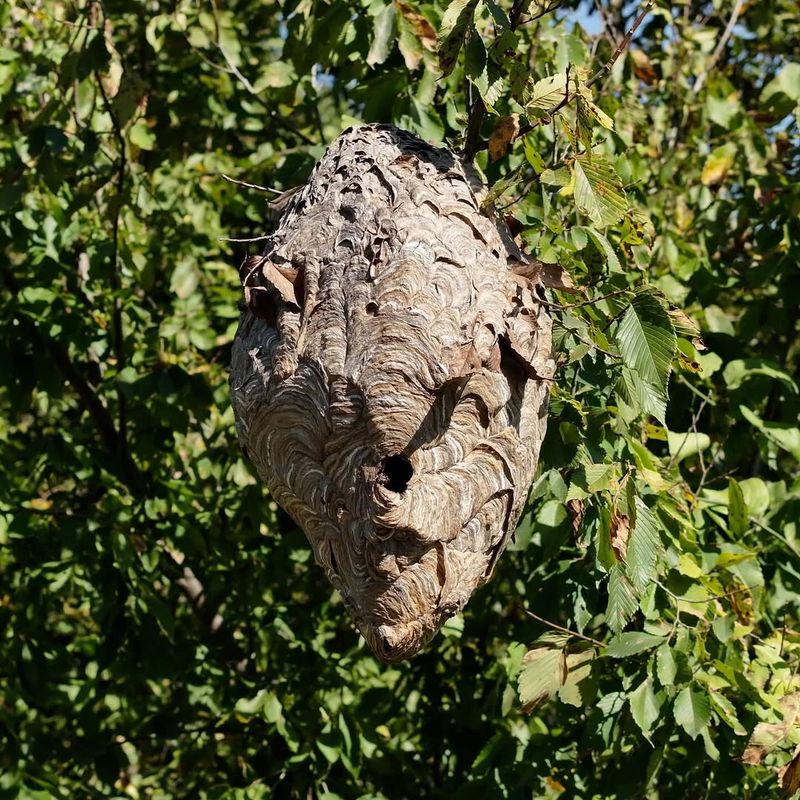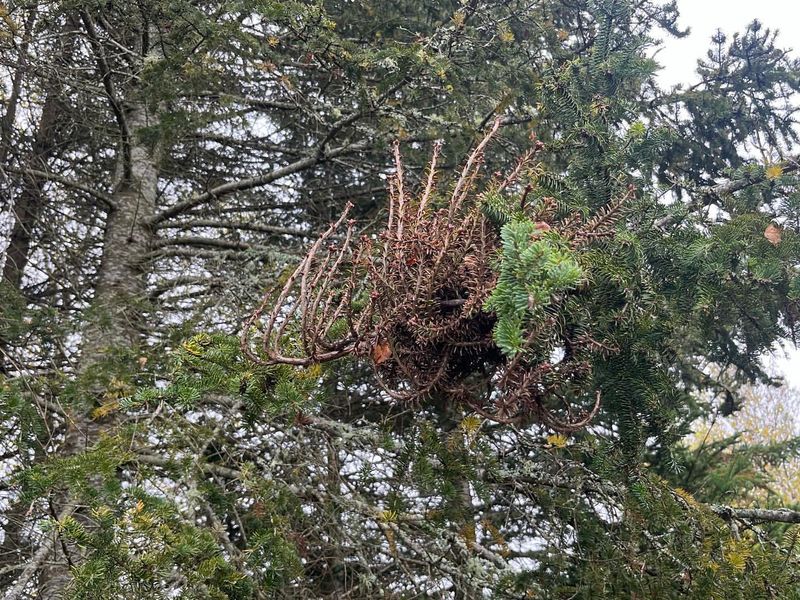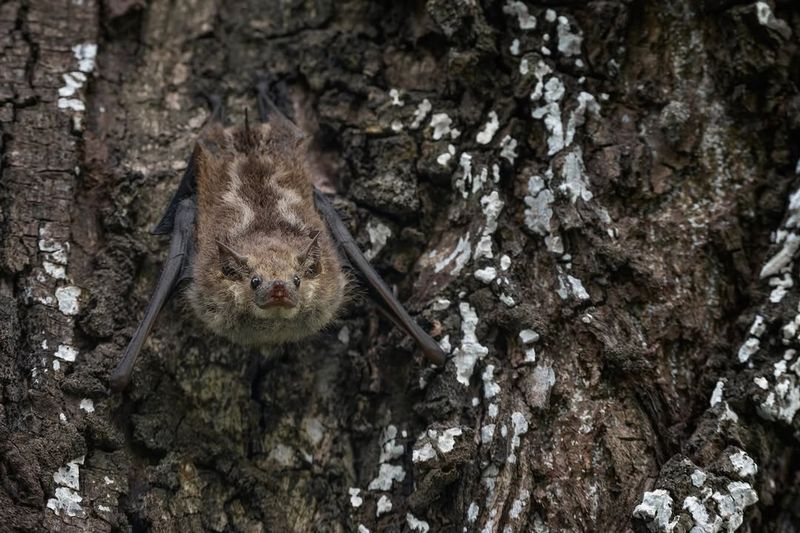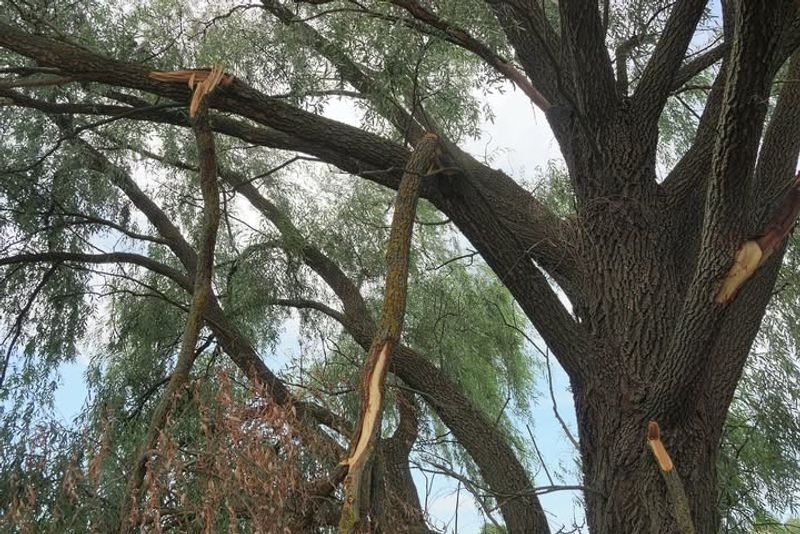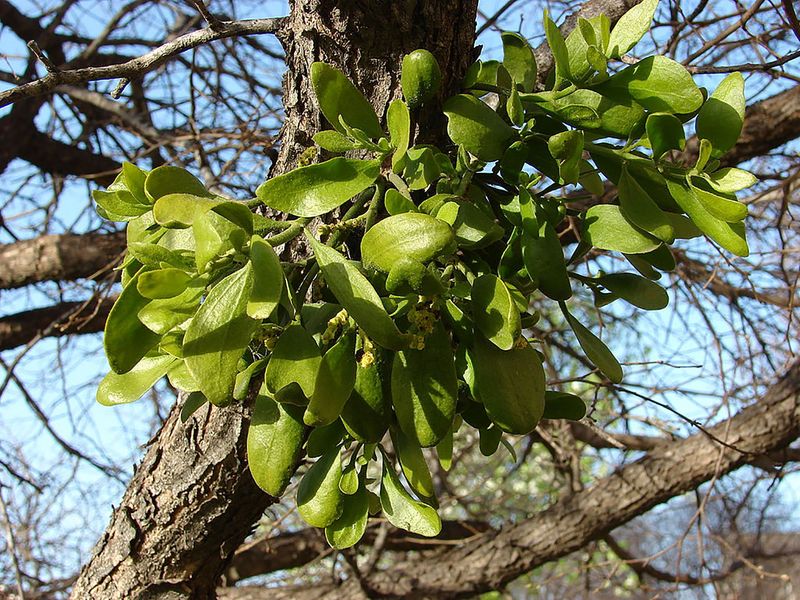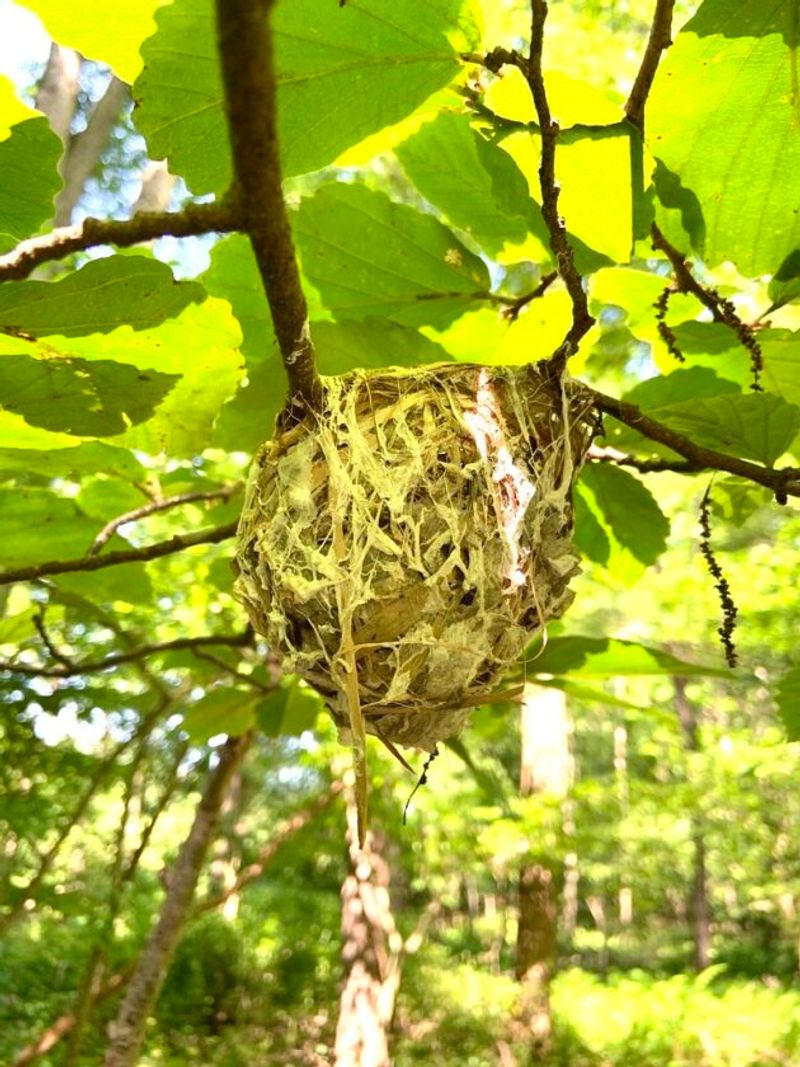Have you ever spotted what looks like a messy bird nest high up in a Pennsylvania tree and wondered what kind of bird built it? You might be surprised to learn that not every leafy ball in the branches belongs to our feathered friends.
Some of these structures are actually homes for other creatures that live right in your backyard. Understanding what these mysterious bundles really are can help you appreciate the wildlife around you even more.
1. Squirrel Dreys Are Cozy Winter Homes
Squirrels build impressive leaf nests called dreys that often get mistaken for bird nests. Unlike birds, squirrels use these structures year-round, especially during cold Pennsylvania winters. A drey typically sits in a tree fork and consists of tightly woven leaves, twigs, and moss.
Inside, the squirrel lines its home with soft materials like grass and bark strips. You can spot the difference because dreys are usually larger and messier than bird nests. Watch for squirrels entering and leaving during daylight hours to confirm your discovery.
2. Bald-Faced Hornet Nests Look Deceptively Leafy
Those gray, papery balls hanging from branches might house hundreds of stinging insects instead of chirping babies. Bald-faced hornets construct elaborate nests from chewed wood fibers mixed with saliva, creating a paper-like material. From a distance, these nests can resemble clumps of dried leaves.
Peak construction happens during summer when colonies grow rapidly. The nests can reach basketball size by fall. Always keep your distance because disturbing these insects leads to aggressive defensive behavior. In winter, abandoned nests pose no threat.
3. Witches Broom Disease Creates Tangled Branch Clusters
Sometimes what appears to be a leafy nest is actually a plant disease affecting the tree itself. Witches broom causes abnormal branch growth that creates dense, tangled clusters resembling bird nests. Various fungi, mites, or viruses trigger this unusual growth pattern in Pennsylvania trees.
These deformed branches grow in tight bunches, trapping leaves and debris naturally. Common trees affected include hackberry, cherry, and honeysuckle species. While unsightly, witches broom rarely kills the tree. The clusters remain permanently attached, unlike actual nests that eventually fall.
4. Roosting Bats Bundle Together For Warmth
Did you know Pennsylvania is home to several bat species that cluster together in trees? During migration or warm evenings, groups of bats hang together beneath branches, creating what looks like a dark, moving mass of leaves. Their brown fur and folded wings blend remarkably well with tree bark.
Species like the hoary bat and red bat prefer tree roosts over caves. They choose leafy branches for camouflage and protection from predators. If your leaf ball moves at dusk, you might have discovered a bat roosting spot worth protecting.
5. Gypsy Moth Egg Masses Disguise Themselves Well
Invasive gypsy moths leave behind fuzzy, tan egg masses that can be confused with nest material from afar. Each mass contains hundreds of eggs covered in hair-like scales from the female moth. Pennsylvania forests face ongoing challenges from these destructive pests.
Egg masses appear on tree trunks, branches, and in crevices during fall and winter. They measure about one to two inches long and have a felt-like texture. Removing these masses before spring prevents caterpillar hatching. Scraping them into soapy water helps control local populations effectively.
6. Mistletoe Clumps Grow As Parasitic Plants
Mistletoe grows naturally in Pennsylvania trees, forming rounded green clumps that resemble leafy nests from below. This parasitic plant sends roots into tree branches, stealing water and nutrients for survival. Oak, hickory, and maple trees commonly host these evergreen bundles.
Unlike deciduous trees, mistletoe stays green year-round, making identification easier in winter. Birds spread mistletoe seeds after eating the sticky white berries. While romantic at holidays, heavy infestations can weaken trees over time. Small amounts typically cause no serious harm to healthy, mature trees.
7. Old Bird Nests Accumulate Leaves And Debris
Sometimes that leaf ball actually started as a bird nest, just not recently. Abandoned nests from previous seasons collect falling leaves, twigs, and wind-blown debris throughout the year. Rain and weather cause the original structure to deteriorate and blend with accumulated materials.
Crows, hawks, and herons build particularly large stick nests that persist for years. These platforms become unrecognizable as leaves fill gaps and cover the framework. Most birds build fresh nests each breeding season, leaving old ones to decay. Nature efficiently recycles these structures into habitat for insects.

